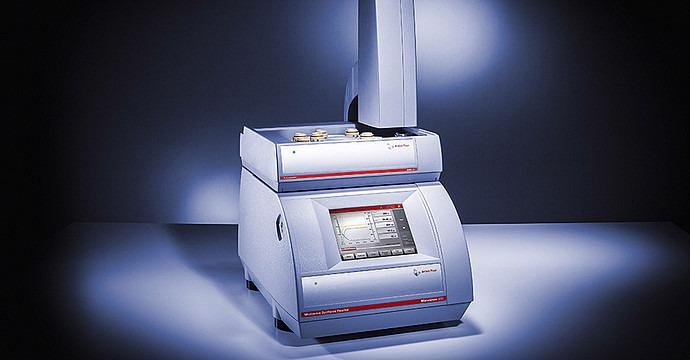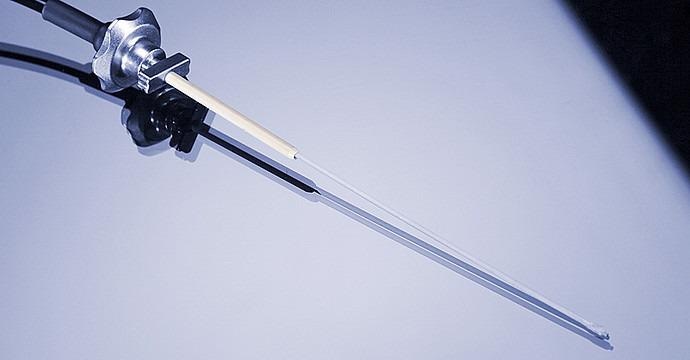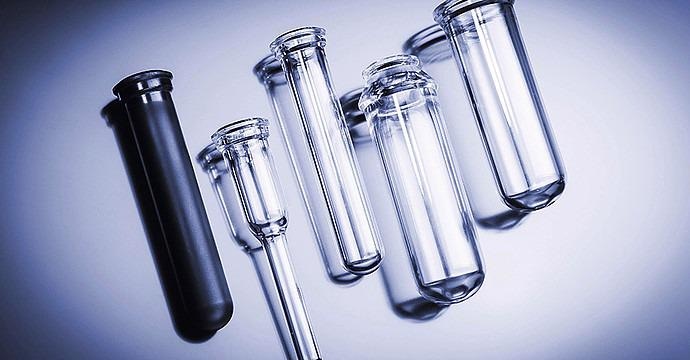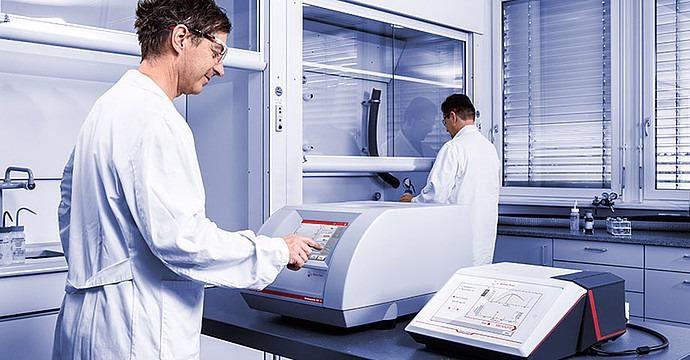The Monowave range of products from Anton Paar is a series of high-performance monomode microwave reactors engineered for microwave synthesis on small to medium scale.
Users can achieve temperatures of up to 300 °C and pressures of up to 30 bar with sophisticated round-the-clock safety features for high-pressure, high-speed and high-temperature reactions.
Productivity and product purity across all applications can be improved in research and development laboratories with accurate heating profiles. Consumable costs and users’ environmental footprint can be reduced by using reusable vials, caps and septa.
Monowave 450
- The Monowave 400 model comes in an attractive package with on-top automation
- This model features exclusively designed vessels for solvent extraction or bulky samples
- Environmental footprint is reduced
- 24 vials of different sizes can be processed unattended
- Remote control through VNC
- Compliant with 21 CFR Part 11
Monowave 400
- Integrated camera with on-screen image
- Sophisticated round-the-clock safety features
- MAS 24 autosampler optionally provided for enhanced productivity
- Highest attainable temperature and pressure conditions of 300 °C and 30 bar
- Total reaction time is up to 100 hours
Monowave 200
- Tool-free reaction vials for any scale ranging from 0.5 to 20 mL
- High-speed, closed-vessel microwave chemistry
- Software upgrades for extended operational limits, supplementary features, accessories and tools
- Temperatures of up to 260 °C and pressures of up to 20 bar
Key Features
Fast and Effective: 24 Sequential Reactions, Unattended
The Autosampler MAS 24 enables 24 unattended reactions, in series, thus improving efficiency and saving time. High field density ensures quick and uniform heating for reactions of all types, up to temperatures of 300 °C. Temperature homogeneity is ensured by a powerful stirring of up to 1200 rpm.

Image Credit: Anton Paar GmbH
The robust 850 W magnetron automatically regulates its unpulsed microwave power to that of the sample. This software-powered self-regulation avoids the guesswork about sample absorption. Users can achieve clean reactions and high yields with ultimate reproducibility.
The Key Factor in Synthesis: Precise, Scalable Temperature Measurement
The existing scientific practice is to use reaction temperature as the relevant parameter in microwave reactions. Therefore, precise measurement of the reaction temperature is crucial to correct transferal and scale-up of reaction protocols between various reactors.

Image Credit: Anton Paar GmbH
In monowave reactors, the temperature is measured using an IR temperature sensor, which is a reliable and robust method for controlling temperature, thus ensuring highly precise temperature measurement.
The optional fiber-optic ruby thermometer equipped in the monowave reactors enables simultaneous internal temperature measurement for precise control of even more challenging reactions, such as exothermic reactions, or those that involve highly sensitive samples.
Vials for Heating any Solvent and any Reaction Mixture
Besides the standard glass vials, silicon carbide (SiC) vessels are also available. These vessels efficiently absorb microwave energy and protect the interior from microwave radiation. This method shows the microwave effects due to selective absorption and enables a comparison between traditional heating and direct microwave heating of reaction mixtures.

Image Credit: Anton Paar GmbH
All parameters like heating and cooling rate, the form factor of the reaction vessel and stirring efficiency are identical, besides the heating mode.
Users can heat all solvents, ranging from non-absorbing ones like hexane to very good absorbers like ionic liquids, to realize equal performance. This makes Monowave the ideal instrument for comparing solvents across chemical reactions.
Lastly, even chemicals that are not ideal for glass vials (alkaline samples or fluorination agents) can be processed in sturdy, chemically inert SiC vessels.
Save Time, Expenditure and the Environment with Tool-Free and Reusable Consumables
Users can select from reaction vials for any scale from 0.5 to 20 mL. In the case of bulky samples and extraction applications, a unique wide-neck vessel provides convenience without affecting the performance.
Users can also establish a hassle-free workflow in their laboratory with tool-free handling while minimizing the cost of ownership and the environmental footprint of their research by using reusable vials, caps and septa.

Image Credit: Anton Paar GmbH
See Everything: Users can Watch Their Synthesis and Analyze it in Real-Time
The Monowave 400 and Monowave 450 models enable users to record images and videos by using the built-in digital camera. They can follow color changes and precipitation, verify the dissolution of substrates and enhance the stirring efficiency. The Monowave 400 R can be integrated with Anton Paar’s Cora 5001 Raman spectrometer to perform in-situ Raman spectroscopy measurements of chemical reactions.

Image Credit: Anton Paar GmbH
Users can also determine intermediates and short-lived transition states, analyze reaction kinetics and enhance reaction conditions, thanks to real-time information regarding the chemical composition of their reaction offered by the monowave reactors. Since the measurement is contactless, there is no worry about cross-contamination, and the need to clean in between experiments is avoided.
Technical Specifications
Source: Anton Paar GmbH
| |
Monowave 400/450 |
Monowave 200 |
| Max. filling volume |
6 mL for 10 mL vial
20 mL for 30 mL vial
2 mL for 4 mL vial |
6 mL for 10 mL vial
20 mL for 30 mL vial
2 mL for 4 mL vial |
| Max. operation pressure |
30 bar (435 psi) |
20 bar (290 psi)
(upgradable) |
| Max. IR temperature |
300 °C |
260 °C (upgradable) |
| Max. fiber-optic temperature |
300 °C |
260 °C (upgradable) |
| Max. power |
850 W |
850 W |
| Vial material |
Borosilicate glass, silicon carbide |
Borosilicate glass, silicon carbide |
| Cap material |
PEEK |
PEEK |
| Camera |
Integrated |
Optional after upgrade |
| Autosampler MAS24 |
Optional |
Optional after upgrade |
| Seal material |
Teflon-coated silicone |
Teflon-coated silicone |
| Typical applications |
Method development Optimization
Basic academic and industrial research |
Method development
Optimization
Basic academic and industrial research |